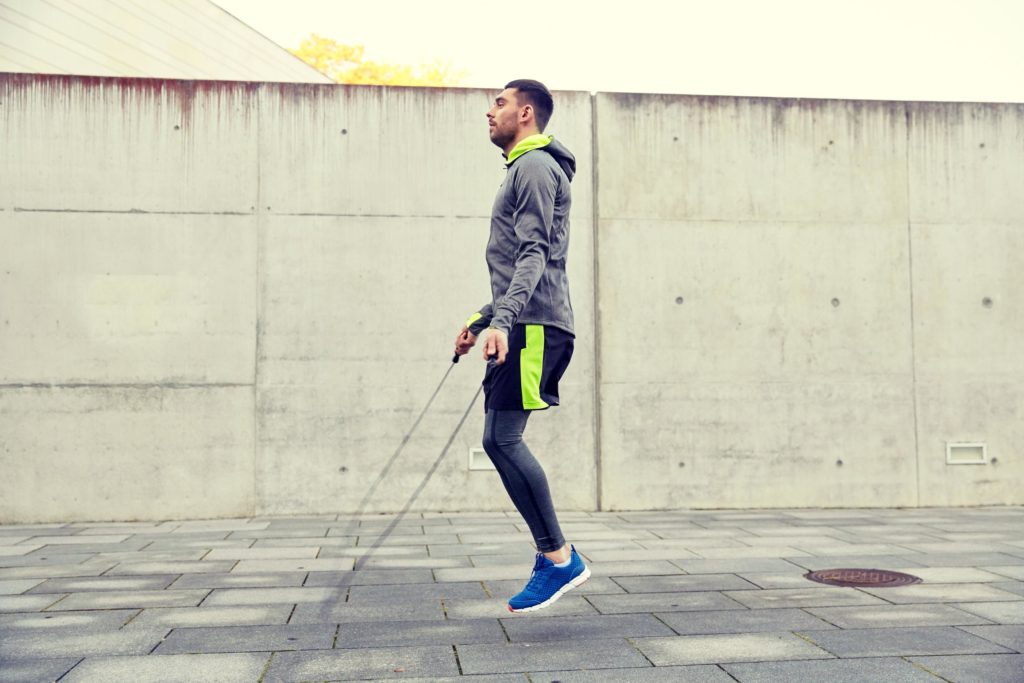Jump rope – 7 very good reasons to do it regularly

It is quick to learn, is great fun, does not cost much and can be done practically anywhere. Jump rope is not only a great calorie killer. It also trains strength, endurance, speed, and coordination. Here are 7 good reasons why you should do jump rope skipping regularly.
The great benefits of jumping rope
There are so many workouts that promise you the moon. Some of them can deliver what they promise, others the hype is a rather good marketing strategy. But jumping rope is definitely one of the most recommendable training methods. Here are 7 reasons why this is so:
- It increases the elasticity and resilience of the lower leg muscles, the surrounding tendons, and fascia. This has been proven to reduce the risk of injury to the Achilles tendon and the plantar tendon.
- All variants of jumping ropes are a so-called cyclical activity. The even cadence and the different rhythms help to improve the coordination between eyes, feet, and hands.
- Jump ropes increase your cognitive abilities. New motor patterns are created. These improve the communication between brain, wrists and lower leg muscles. You can benefit from this until old age.
- You can easily integrate it into circuit training. Already the two to three minutes you jump, bounce or run with the rope during training improves the so important cardiorespiratory skills. It tells you how well your breathing and blood circulation are able to supply the body with oxygen.
- It fits into the smallest pocket and is, therefore, something like your own fitness studio to take along. If you are traveling, you can do your training in a hotel. A lot of accommodations offers a training room. The equipment available there is not always the best, but that’s what your skipping rope is for.
- You can do great outdoor training in good weather. In the sports field, in the park or, if available, also in your own garden.

What you should pay attention to when buying
In order to have a lot of fun with your skipping rope, it should have a ball bearing. You can find the right length of rope by placing your foot tips in the middle of the rope. Then take the rope ends in both hands and tighten them. If the grips reach about the chest, the length is correct. Also important are good sports shoes and reasonably tight clothing.
A few tips on jumping technique
You should always keep your body upright when skipping. To do this you have to tense your abdominal and back muscles accordingly. The upper arms should be close fitting, the forearms should be held diagonally forward. The swing is only in the wrists. When jumping, you work almost exclusively on the forefoot. Beginners with calf muscles that are not yet so well developed will quickly reach their limits. So please do not exaggerate immediately.
You should keep this in mind when jumping
If you don’t have a good command of the technique yet, you should first warm-up for a few minutes without a rope. If your technique is not yet fully developed, skipping is otherwise too strenuous. But if you have a good technique, there is nothing against a warm-up program with rope. An interval training with 30 seconds rope skipping and a 10 to 30 seconds break is ideal. For beginners, it is sufficient to integrate five minutes of rope skipping into the usual training. Advanced users can also train with the rope for ten to 15 minutes.

A small selection of jumping techniques
- Normal skipping: Like you’ve probably done it before. You jump with both legs at the same time and only as high as absolutely necessary. It takes a little practice, but you can improve your technique quickly.
- Boxer shuffle or alternate foot Jumps. They actually look quite simple but are quite demanding in terms of coordination. You jump alternately with your right foot and with your foot slightly off the ground. Athletes also know this as skippings, but without too much knee lift.
- Lunges or split legs: You take a light lunge step alternately on each jump. The further your feet are apart, the more strenuous it is.
- Jumping Jack. With every jump, you make a jumping jack. The more the feet apart, the more strenuous it is.
- One-legged jumps. Again, it is important to jump only as high as necessary.
- High knees running. Coordinatively demanding and strenuous. You try to run on the spot during the rope skipping while keeping your knees up.